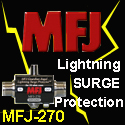First satellite QSO using D-STAR Digital Voice
Discussion in 'Amateur Radio News' started by G4TUT/SK2022, Jul 4, 2007.
- Thread Status:
- Not open for further replies.
Page 1 of 3
Page 1 of 3
- Thread Status:
- Not open for further replies.









